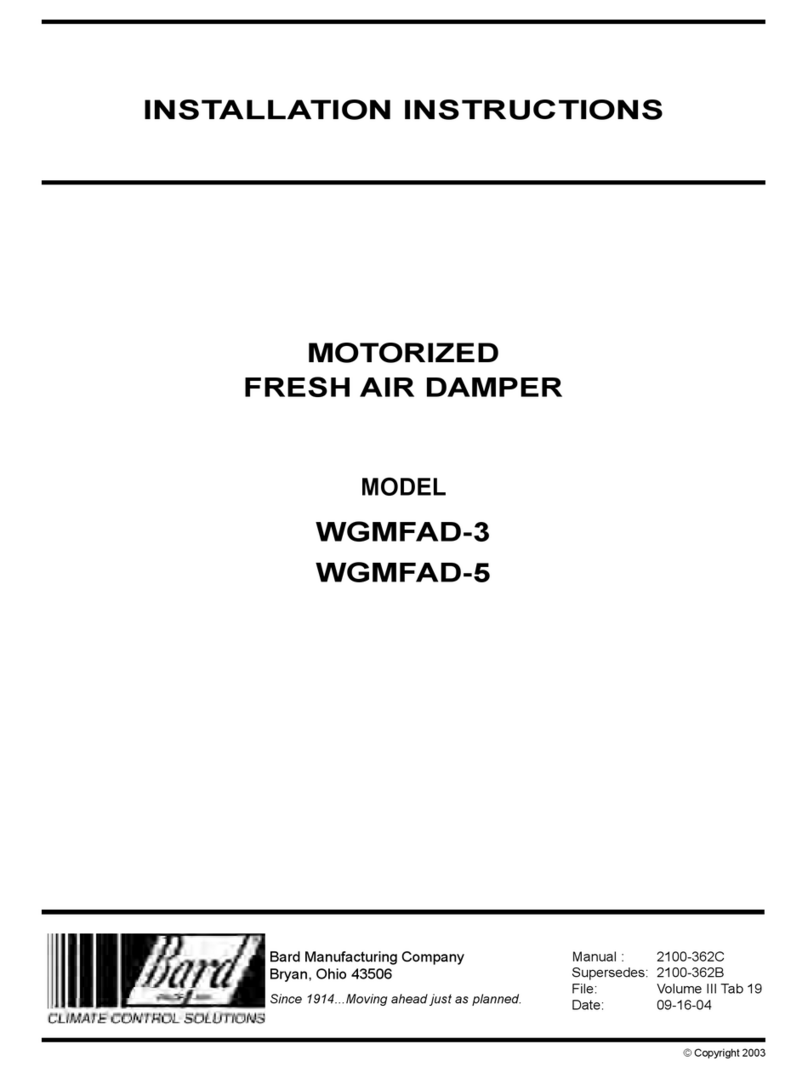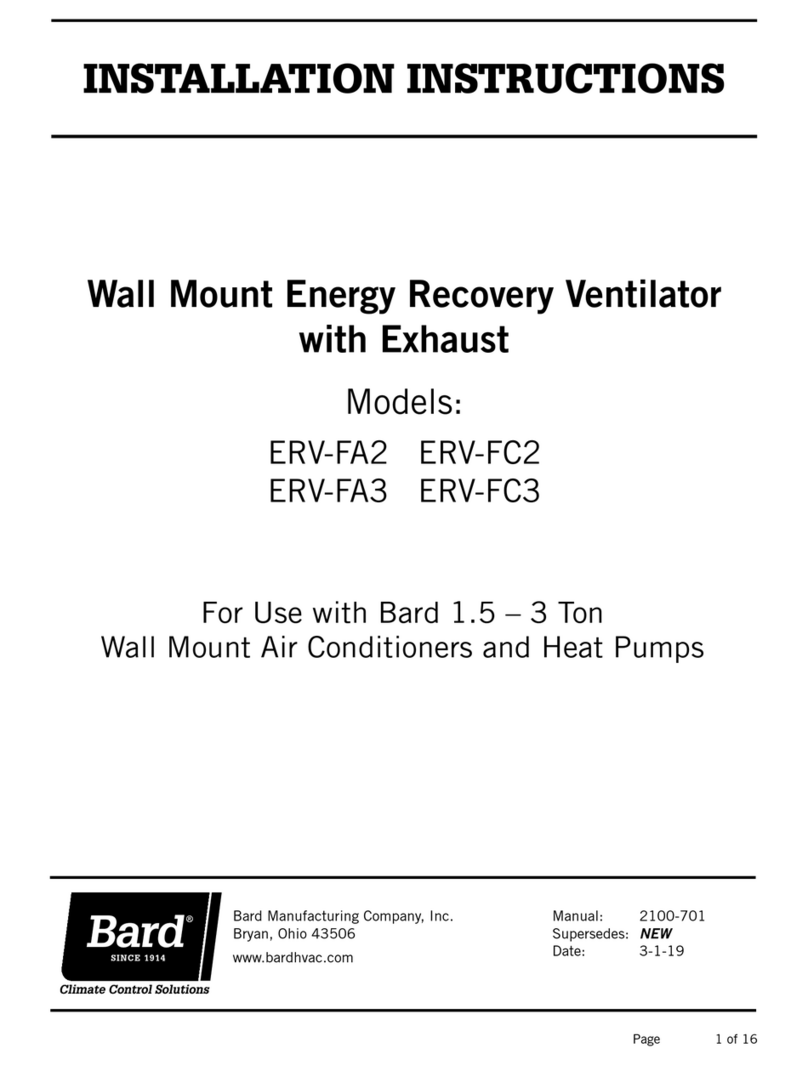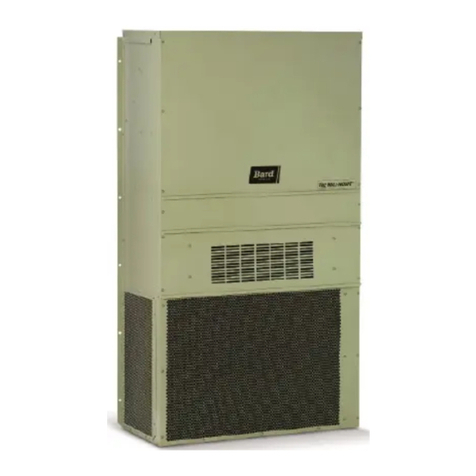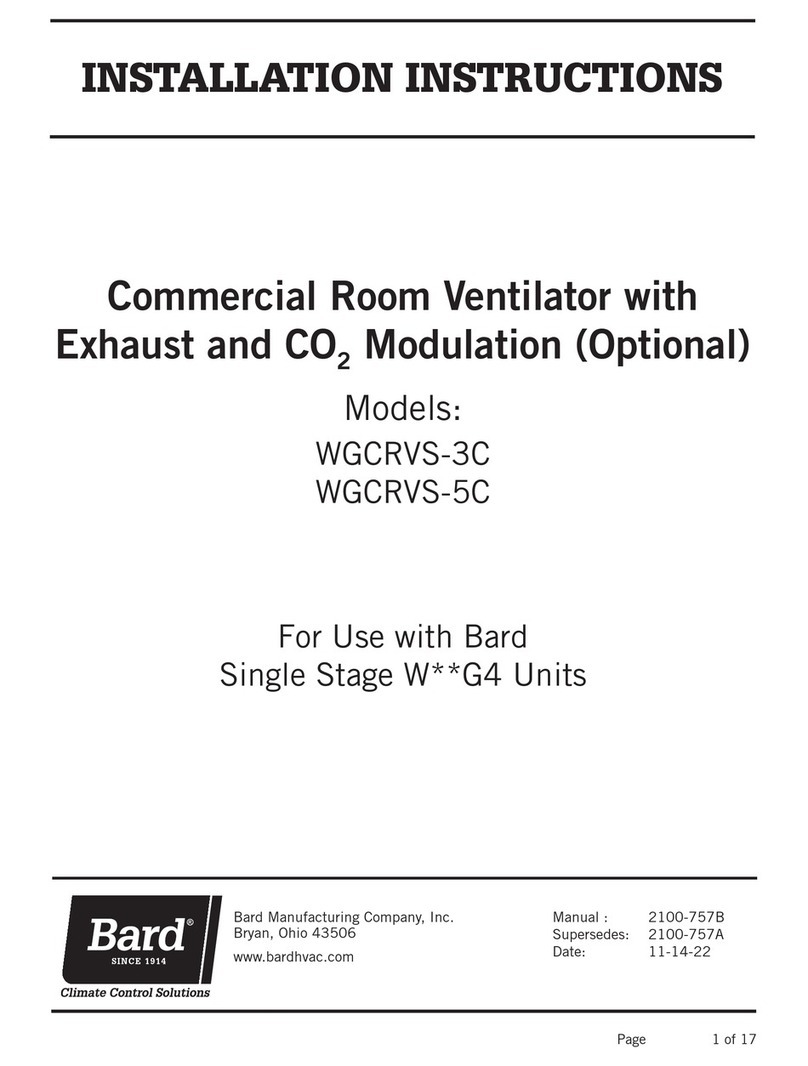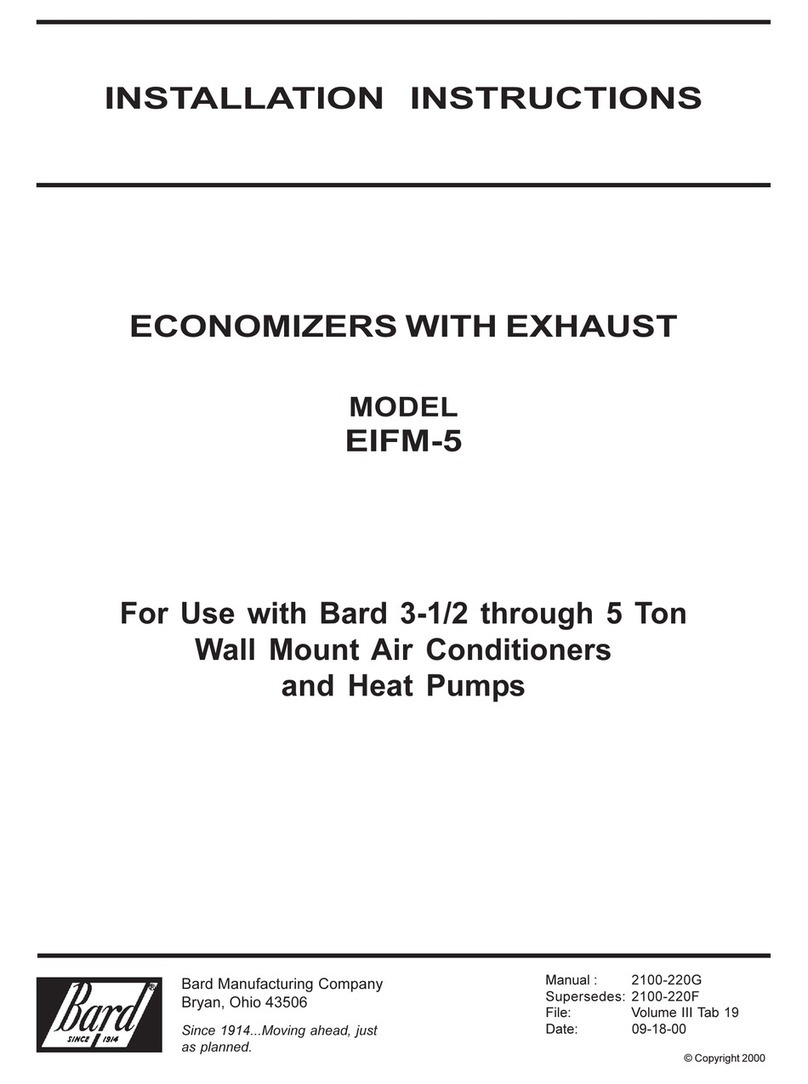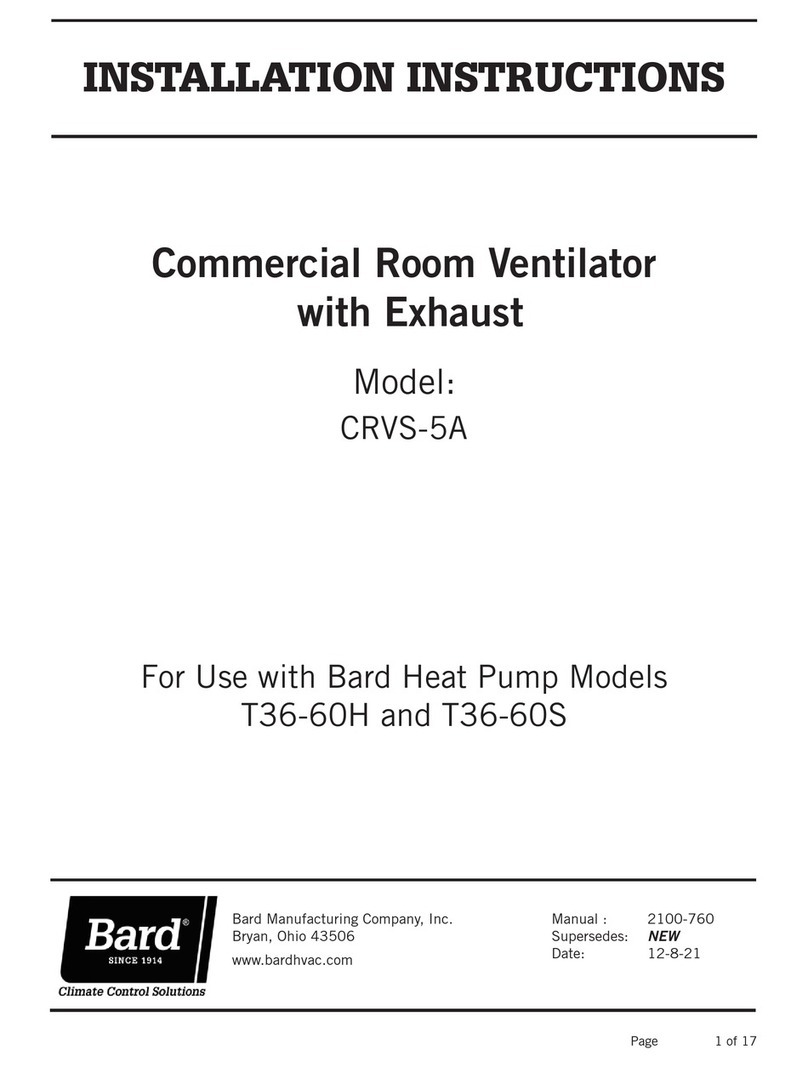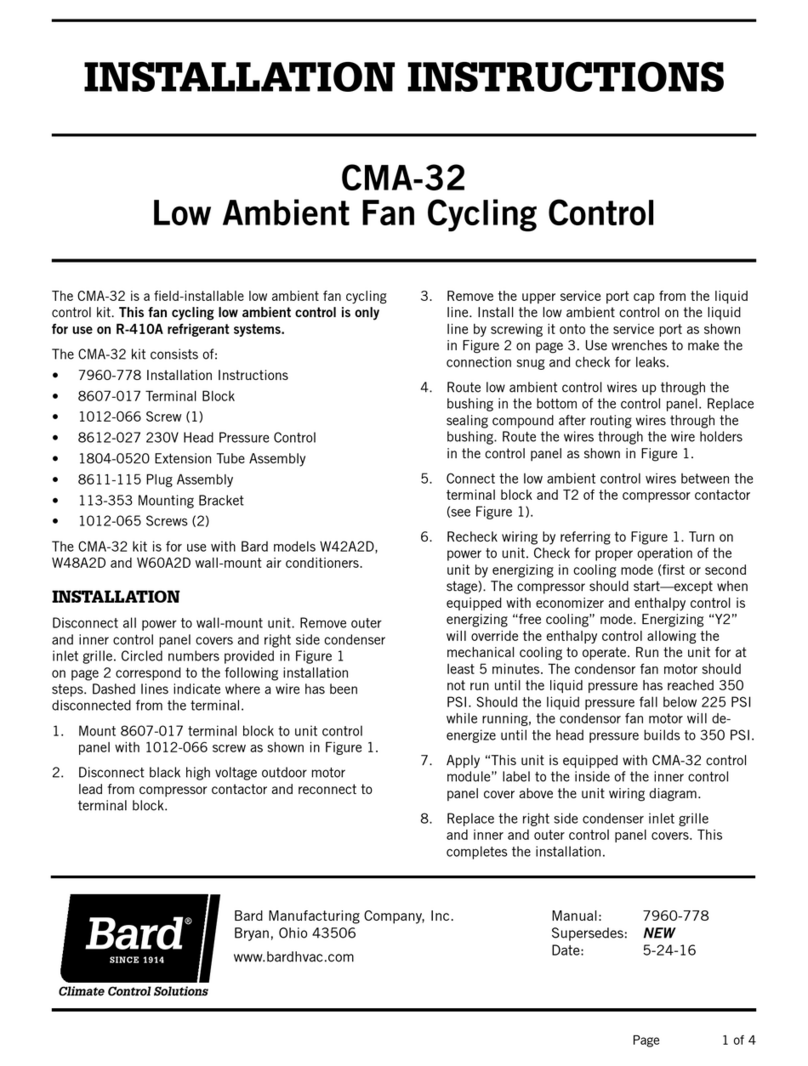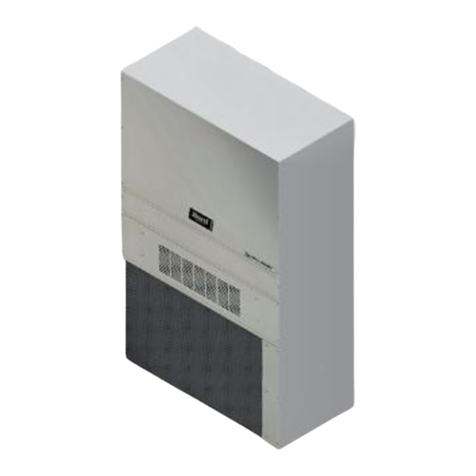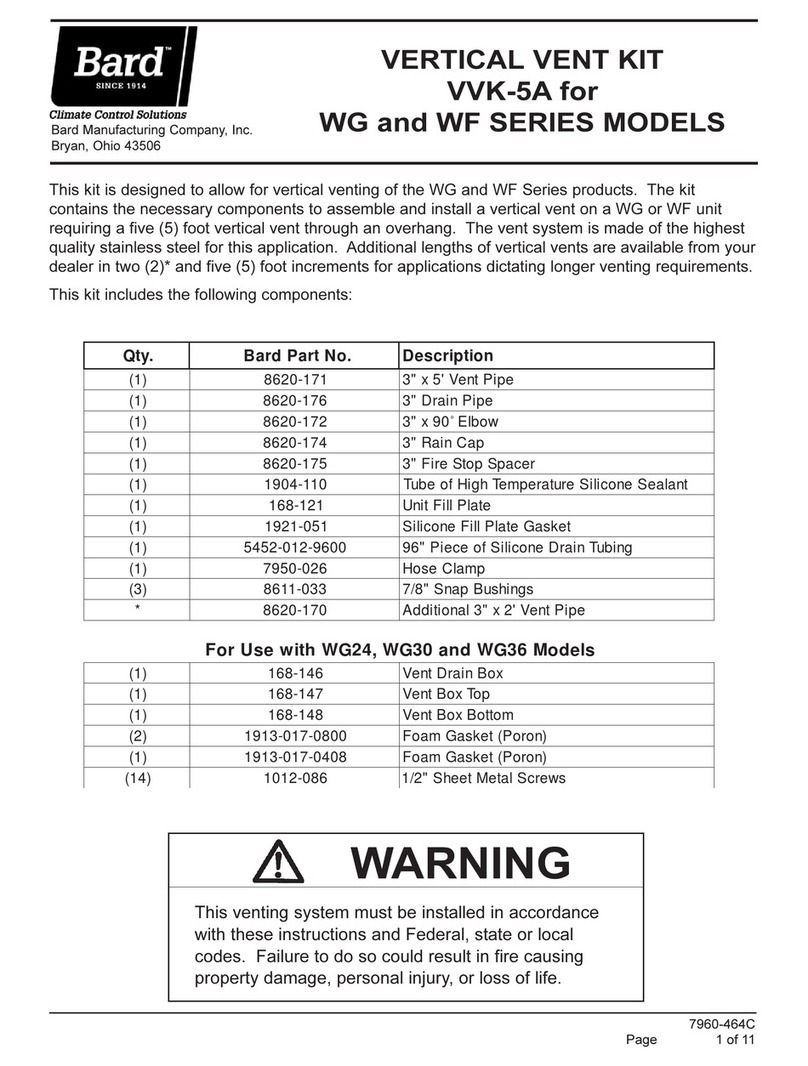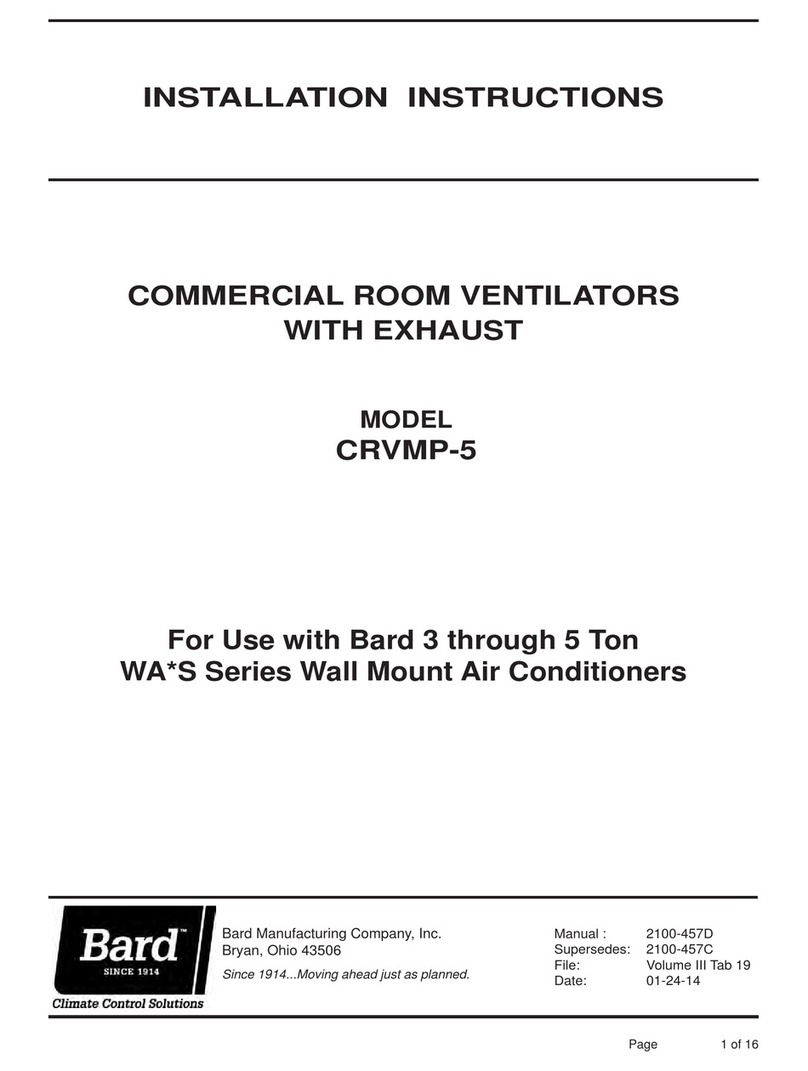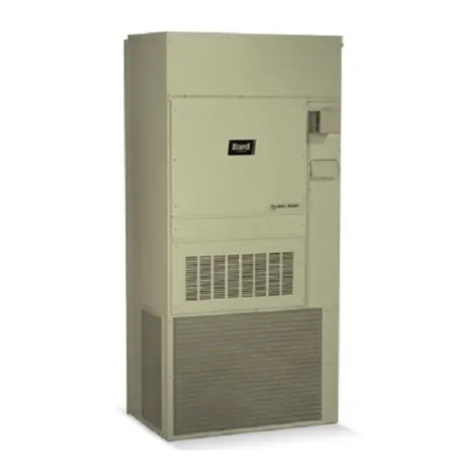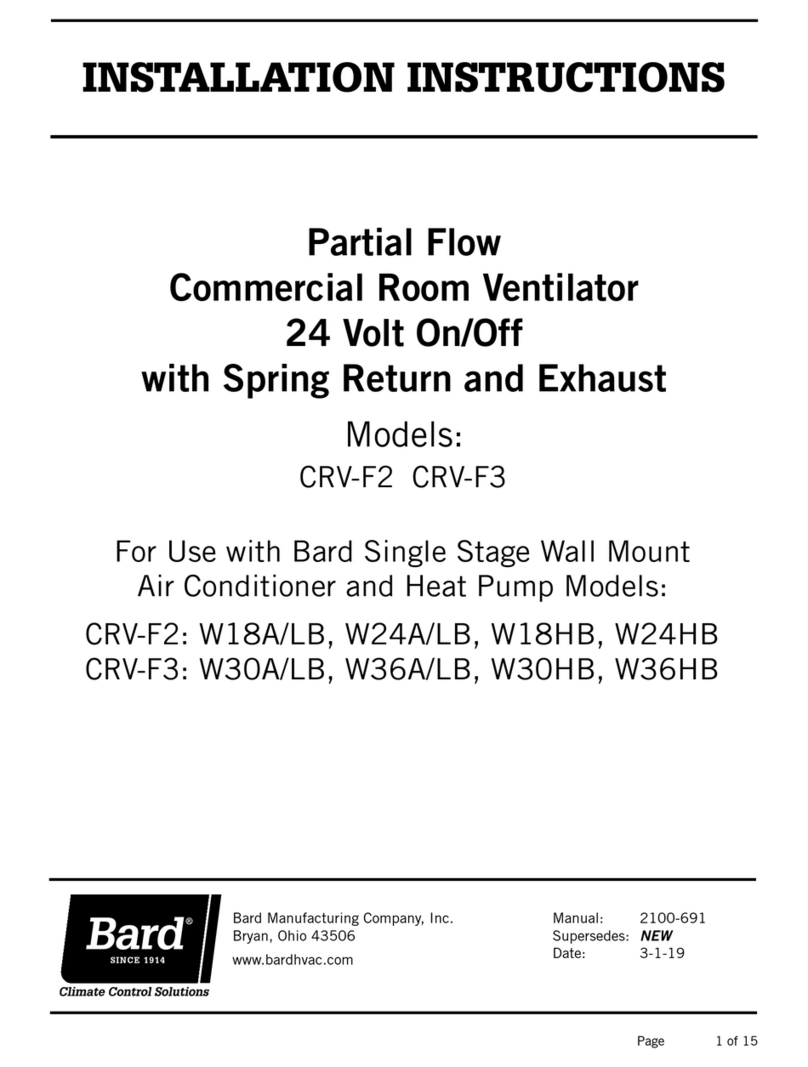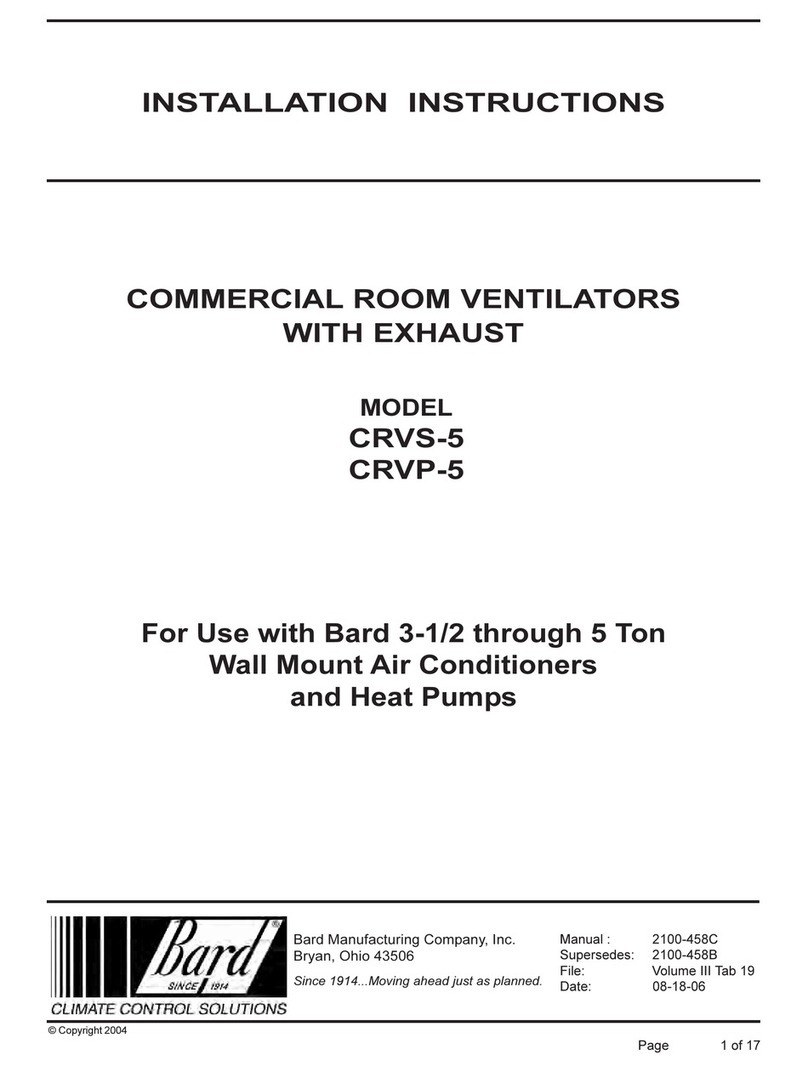
Manual 2100-759
Page 3 of 16
General Information
The ventilator should only be installed by a trained
heating and air conditioning technician. These
instructions serve as a guide to the technician
installing the ventilator package. They are not
intended as a step-by-step procedure with which the
mechanically inclined owner can install the package.
The ventilator housing is shipped in one carton which
contains the electrical harness, miscellaneous hardware
and installation instructions.
Unpacking
Upon receipt of the equipment, be sure to compare the
model number found on the shipping label with the
accessory identication information on the ordering and
shipping document to verify that the correct accessory
has been shipped.
Inspect the carton housing of each ventilator as it is
received. Before signing the freight bill, verify that all
items have been received and that there is no visible
damage. Note any shortages or damage on all copies
of the freight bill. The receiving party must contact
the last carrier immediately, preferably in writing,
requesting inspection by the carrier’s agent. Concealed
damage not discovered until after loading must be
reported to the carrier within 15 days of its receipt.
Description
The CRVS-3A ventilator is designed to be used with
Bard heat pump models T24H, T30H and T30S. It is
an electromechanical vent system designed to provide
fresh air to meet indoor air quality standards.
Models
When installed in the above listed models, the CRV
provides built-in exhaust provisions. When the damper
blade opens to bring fresh air in, the damper also
opens an exhaust relief. The exhaust air will ow into
the condenser section of the unit. The condenser fan
will help draw exhaust air out.
CRV Features
• One piece construction – easy to install.
• Exhaust air damper – built in with positive closed
position. Provides exhaust air capability to prevent
pressurization of tight buildings.
• Actuator motor – 24 volt, power open, spring return
with built in torque limiting switch.
GENERAL
Electrical shock hazard.
Disconnect remote electrical power supply
or supplies before servicing.
Failure to do so could result in electric
shock or death.
!WARNING
Exposed moving parts.
Disconnect all electrical power before
servicing.
Failure to do so can result in severe injury
or amputation.
!WARNING
Sequence of Operation
On a call for blower operation, CRV will open to
pre-purge position as set by "PP" potentiometer
for the amount of time set by the PP jumper. The
CRV will then move to the position set by the "OCC"
potentiometer. If PP jumper is in 0 position, the CRV
will immediately open to the position set by the "OCC"
potentiometer.
NOTE:
These sequence descriptions do not apply if CO
2
controller is used. The CRV will control according
to observed CO
2
levels in the conditioned space.
Refer to information on page 8.
A call for 1st stage cooling or heating cycles the
compressor, and the dampers reposition to the Y1
potentiometer setpoint. A call for 2nd stage cooling or
heating energizes compressor solenoid and repositions
the damper blade to the Y2 potentiometer position. On
loss of blower operation, CRV closes fully.
Sharp metallic edges.
Take care and wear appropriate protective
devices to avoid accidental contact with
sharp edges.
Failure to do so can result in personal injury.
!CAUTION






